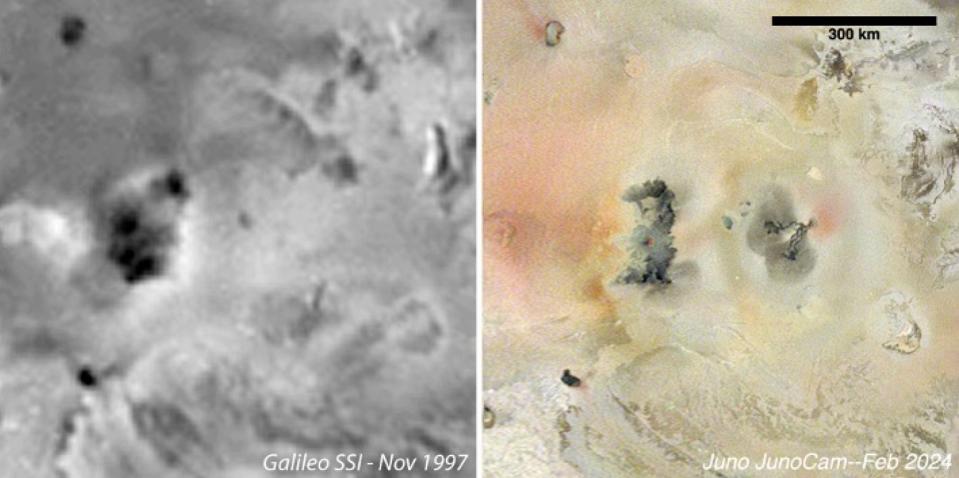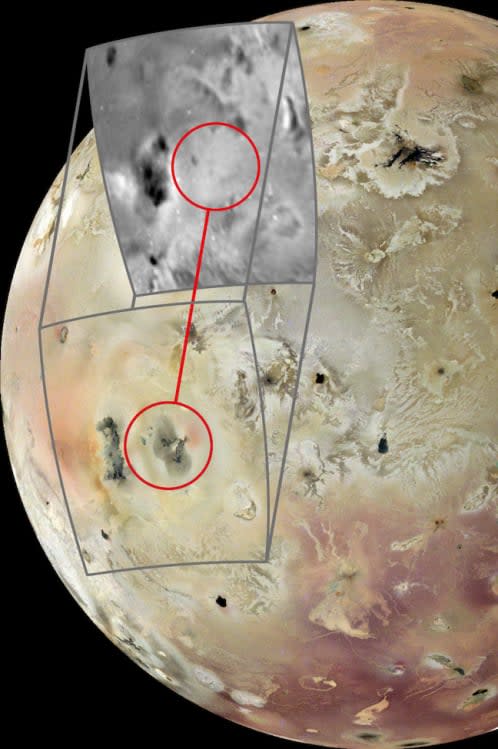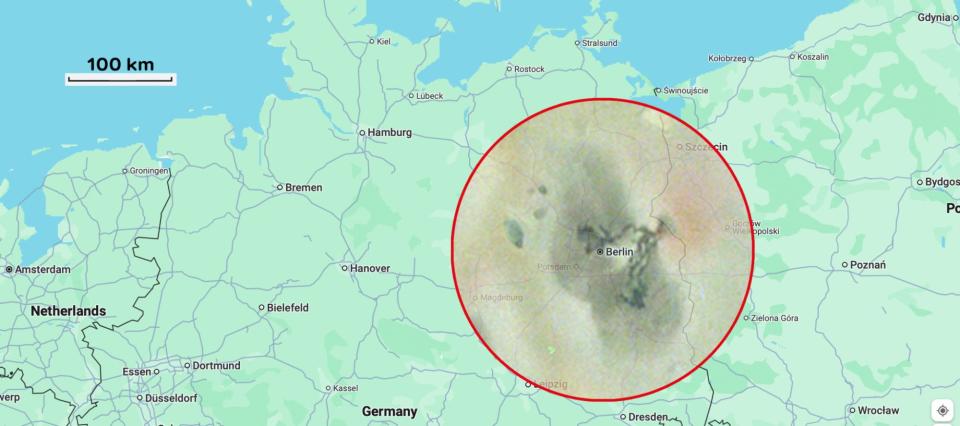The most volcanic world in our solar system has sprouted a new volcano. And its lava flows are enormous.
Jupiter’s molten moon Io has been surveyed by a number of passing spacecraft, allowing planetary scientists to see changes on the surface. Recently, NASA‘s Juno mission made the closest swings by Io in two decades. The 2024 views show a dynamic volcano where, just decades ago, there was a featureless region.
“Our recent JunoCam images show many changes on Io, including this large, complicated volcanic feature that appears to have formed from nothing since 1997,” Michael Ravine, the advanced projects manager at Malin Space Science Systems, which operates the spacecraft’s JunoCam instrument, said in a statement. The discovery was just presented at the 2024 Europlanet Science Congress.
SEE ALSO: NASA scientist viewed first Voyager images. What he saw gave him chills.
Prodigious amounts of lava have clearly poured from this new volcano; you can see it running to the left of the vent in two potent streams some 100 kilometers (62 miles) long. The lava, overlain over a map of the city of Berlin in another graphic below, would dominate a large swathe of Germany. Where the lava flows end and have pooled, intense heat from the molten rock created those two gray circles when frozen surface material vaporized into space.
NASA’s Galileo spacecraft captured the black and white image in 1997, and Juno’s views are from February 2024. The entirety of the volcanic feature sprawls over an area about 180 km by 180 km (112 miles by 112 miles).

On left: Galileo spacecraft imagery from 1997. On right: Juno spacecraft imagery from 2024. The feature on right is the new volcano with accompanying lava flows. Credit: NASA / JPL-Caltech / SwRI / MSSS


The new volcano recently spotted on Io’s surface. Credit: NASA / JPL-Caltech / SwRI / MSSS / Europlanet
Io is blanketed in erupting volcanoes because it’s relentlessly locked in a tug-of-war between nearby objects, including the colossal Jupiter. “Not only is the biggest planet in the solar system forever pulling at it gravitationally, but so are Io’s Galilean siblings — Europa and the biggest moon in the solar system, Ganymede,” NASA explained in a statement. “The result is that Io is continuously stretched and squeezed, actions linked to the creation of the lava seen erupting from its many volcanoes.”


The new Io volcano and lava flows overlaid on Berlin, Germany. Credit: NASA / JPL-Caltech / SwRI / MSSS / Europlanet / Google Maps
This volcanic world, an object a little bigger than Earth’s moon, is blanketed in hundreds of volcanoes and ceaselessly erupting. The first-ever observations of Io, captured by the pioneering Voyager 1 craft, spotted at least eight different active volcanoes. The most recent flybys in 2023 and early 2024 spotted nine plumes from volcanoes.
It’s a vicious world, inhospitable to life. And beneath its volcanic surface, it may harbor a sea of magma.
Source Agencies

